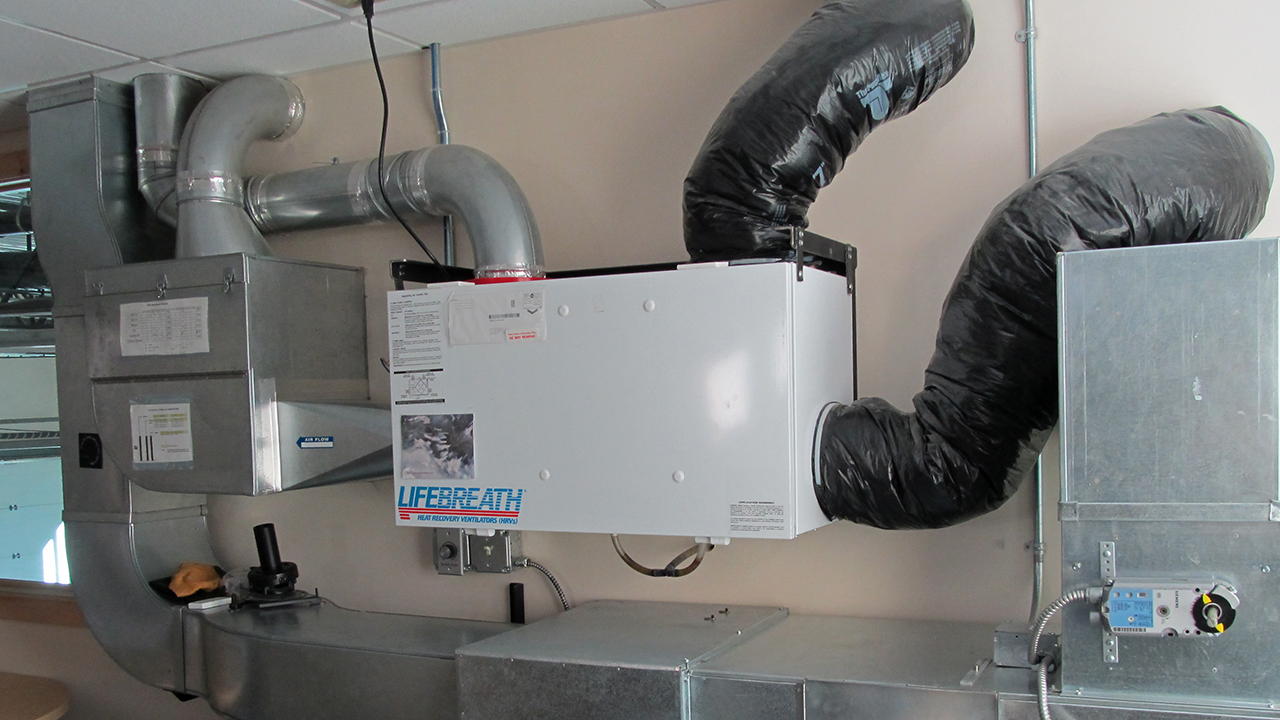How HRV Helps Prevent Mold and Dampness
The All-Inclusive Guide to the Uses of Heat Recovery Ventilation in Modern Buildings
Heat Recovery Ventilation (HRV) systems stand for a substantial improvement in building innovation (HRV Heat Recovery Ventilation). They provide an approach for exchanging stagnant indoor air with fresh outside air while reducing energy loss. This strategy not just boosts interior air high quality yet additionally contributes to energy effectiveness in both household and business buildings. Comprehending the different applications and benefits of HRV can disclose its crucial role in modern-day layout and sustainability initiatives. The effects of this technology are worth checking out additionally
Comprehending Heat Recovery Ventilation Equipments

Although many modern-day buildings prioritize power performance, recognizing heat recovery ventilation (HRV) systems is important for optimizing interior air top quality and minimizing energy consumption. HRV systems work by transferring heat from stale interior air to inbound fresh air, successfully keeping comfy indoor temperature levels while lessening power loss. These systems are composed of a heat exchanger, fans, and ductwork that assist in the circulation of air. Throughout wintertime, HRV units catch and recycle heat from the outbound air, while in summer season, they can help cool incoming air. By continually exchanging air, HRV systems likewise minimize humidity and the concentration of interior contaminants. Appropriate installation and upkeep of HRV systems are important for their performance and efficiency in boosting general structure efficiency and comfort.
Advantages of Heat Recovery Ventilation
Heat recovery ventilation systems provide numerous benefits that boost both energy efficiency and indoor air high quality in modern structures. By recording and reusing power from exhaust air, these systems substantially lower cooling and heating expenses, bring about reduced power consumption. Furthermore, they keep a steady flow of fresh exterior air, reducing the threat of interior air toxins and allergens. This constant exchange assists regulate moisture degrees, stopping mold growth and guaranteeing a much healthier living atmosphere. In addition, HRV systems add to sustainability goals by reducing general carbon footprints. Their ability to maximize ventilation without giving up thermal convenience makes them a valuable addition to contemporary structure style, promoting both financial and environmental advantages.
Applications of HRV in Residential Buildings
As home owners increasingly prioritize power effectiveness and indoor air top quality, the applications of warm recuperation air flow (HRV) systems in residential buildings have become extra prevalent. HRV systems are especially helpful in snugly sealed homes, where preserving fresh air blood circulation is important for protecting against moisture buildup and interior pollutants. They efficiently transfer warmth from outward bound stagnant air to inbound fresh air, reducing energy prices associated with cooling and heating. Additionally, HRVs can boost comfort degrees by managing moisture and temperature level. They are also versatile for different household designs, including single-family homes and multi-unit structures. Overall, incorporating HRV systems supports lasting living practices while making certain a much healthier interior setting for owners.
HRV in Commercial and Commercial Settings
In business and use this link commercial settings, the implementation of warmth recuperation air flow (HRV) systems has ended up being progressively critical for maximizing power efficiency and keeping air top quality. These systems properly transfer heat from exhaust air to incoming fresh air, decreasing the demand for extra home heating or air conditioning. This not only reduces energy costs but additionally adds to sustainability efforts. Industries such as production, warehousing, and workplace structures profit significantly from HRV systems, as they aid regulate temperature and Read Full Article humidity degrees, making certain a comfy and productive environment. Moreover, HRV systems aid in getting rid of pollutants and excess dampness, boosting indoor air high quality. As guidelines around air top quality end up being more stringent, the fostering of HRV innovation is likely to grow, making it a critical part of modern industrial and commercial infrastructure.
Future Fads in Heat Recovery Ventilation Innovation

Frequently Asked Concerns
Exactly How Does Heat Recovery Ventilation Influence Indoor Air Top Quality?
Heat recovery ventilation significantly enhances indoor air top quality by continually trading stale indoor air with fresh outdoor air while recuperating power. This process lowers pollutants, preserves perfect humidity levels, and assures a much healthier setting for passengers.
Can HRV Solutions Be Mounted in Existing Structures?
HRV systems can undoubtedly be installed in existing structures. Retrofitting may require adjustments to ductwork and air flow designs, but it significantly boosts energy effectiveness and indoor air high quality, making it a feasible this content option for older structures.
What Upkeep Is Needed for HRV Solutions?

Exist Particular Climates Where HRV Is A Lot More Efficient?
Heat recovery ventilation systems are particularly reliable in climates with substantial temperature differences in between seasons. These systems enhance power effectiveness by recovering heat from exhaust air, making them optimal for both cool and reasonably cozy environments.
How Do HRV Systems Affect Energy Expenses?
